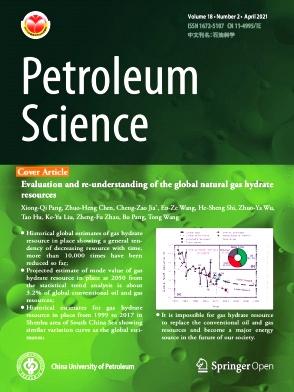Factors and detection capability of look-ahead logging while drilling (LWD) tools
IF 6
1区 工程技术
Q2 ENERGY & FUELS
引用次数: 0
Abstract
Electromagnetic technology used in logging while drilling (LWD) provides the resistivity distribution around a borehole within a range of several tens of meters. However, a blind zone appears in front of the drill bit when operating in high-angle wells, limiting the ability to detect formations ahead of the drill bit. Look-ahead technology addresses this issue and substantially enhances the proactive capability of geological directional drilling. In this study, we examine the detection capabilities of various component combinations of magnetic dipole antenna. Based on the sensitivity of each component to the axial information, a coaxial component is selected as a boundary indicator. We investigate the impact of various factors, such as frequency and transmitter and receiver (TR) distance, under different geological models. This study proposes 5 and 20 kHz as appropriate frequencies, and 10–14 and 12–17 m as suitable TR distance combinations. The accuracy of the numerical calculation results is verified via air-sea testing, confirming the instrument's detection capability. A test model that eliminated the influence of environmental factors and seawater depth is developed. The results have demonstrated that the tool can recognize the interface between layers up to 21.6 m ahead. It provides a validation idea for the design of new instruments as well as the validation of detection capabilities.
求助全文
约1分钟内获得全文
求助全文
来源期刊

Petroleum Science
地学-地球化学与地球物理
CiteScore
7.70
自引率
16.10%
发文量
311
审稿时长
63 days
期刊介绍:
Petroleum Science is the only English journal in China on petroleum science and technology that is intended for professionals engaged in petroleum science research and technical applications all over the world, as well as the managerial personnel of oil companies. It covers petroleum geology, petroleum geophysics, petroleum engineering, petrochemistry & chemical engineering, petroleum mechanics, and economic management. It aims to introduce the latest results in oil industry research in China, promote cooperation in petroleum science research between China and the rest of the world, and build a bridge for scientific communication between China and the world.
 求助内容:
求助内容: 应助结果提醒方式:
应助结果提醒方式:


